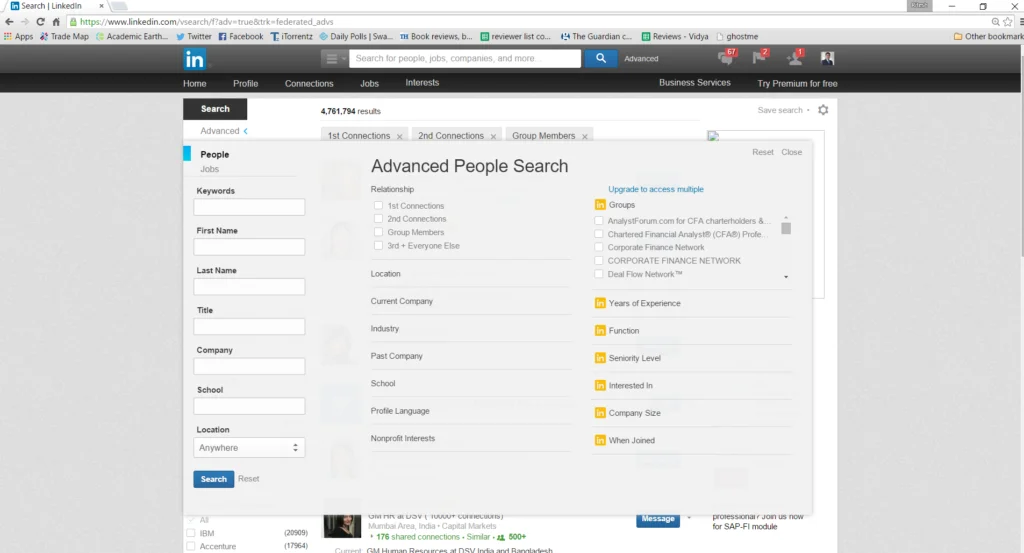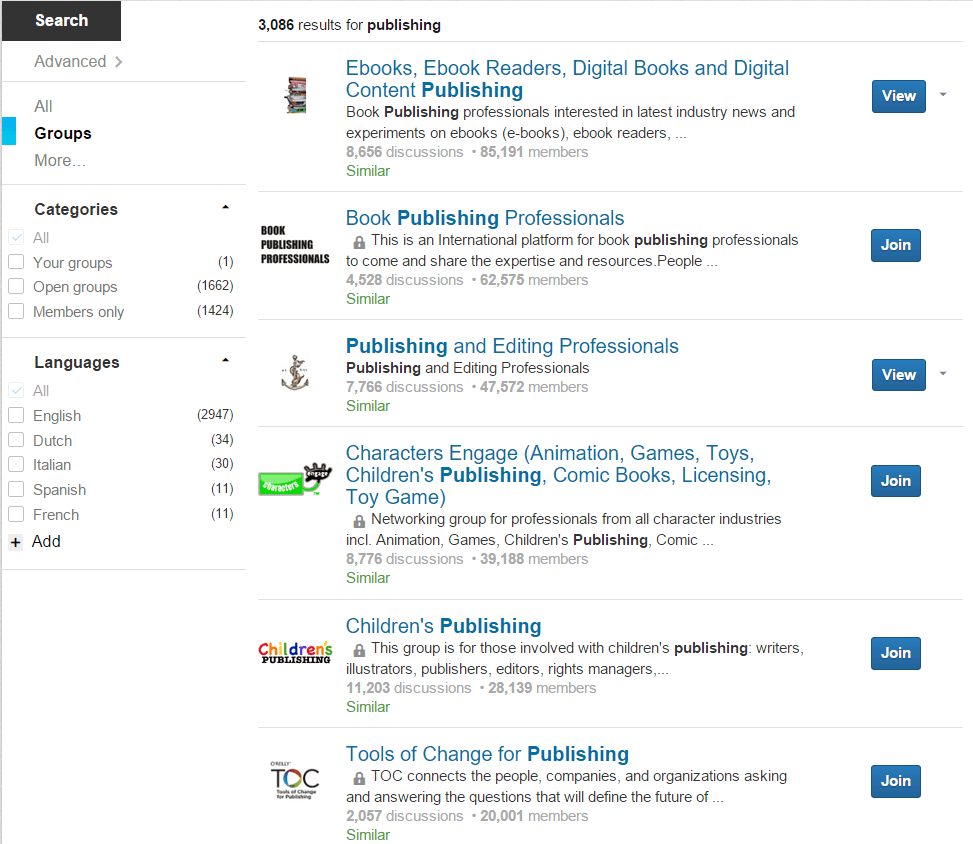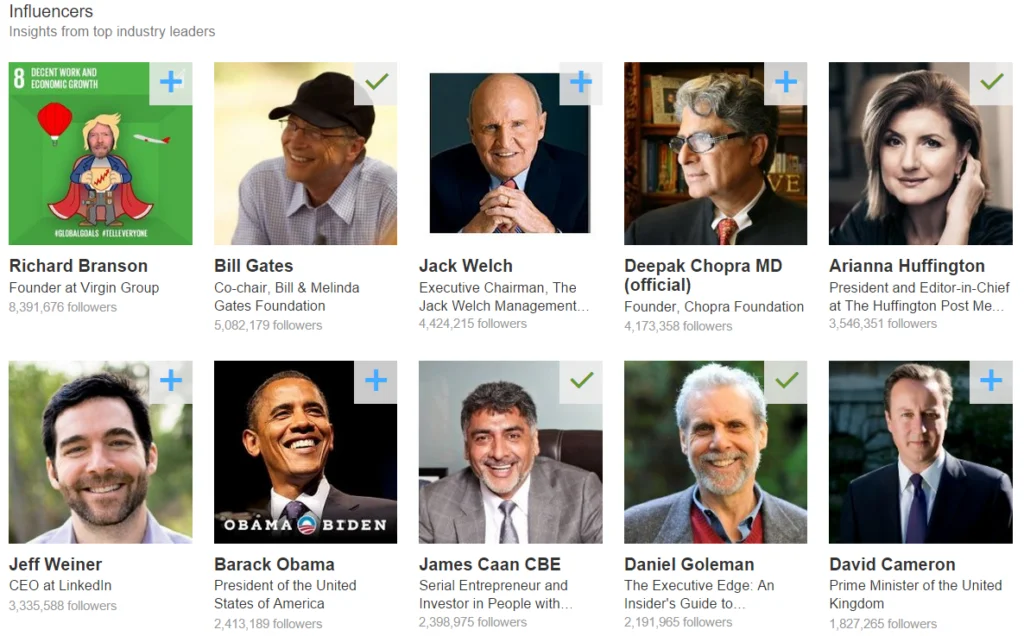Ask any indie author which social media they use and love the most, and most are unlikely to reply “LinkedIn”. With its more businesslike atmosphere and presentation, it's not the most alluring to creative types. Yet self-published writers who ignore it are missing some important and valuable tricks, says Ritesh Kala, founding partner of Read Out Loud Publishing LLP, a book marketing and distribution company which helps international authors bring their books to book stores and online sales platforms in India.
Over the last couple of years, LinkedIn usage by authors, bloggers, publishers and other service providers has simply exploded. I know of many people who boast about the number of connections they have on there (a friend has 45,000+ contacts), but LinkedIn is mainly about how effectively you use it.
The good news is that LinkedIn does not have some of the distinct issues of other social networks. However even here, your objective should be to build great connections, and not generate sales. After having used LinkedIn for over a decade, as an investment banker and now as part of the publishing industry here are my key tips on to get the most from it.
1 Find the Right People
LinkedIn was started for professionals to seek out professionals. The trick is to look in the right places.
For example, if I am looking for editors who have experience of editing non-fiction books and who are based out of Mumbai, I can get recommendations from my connections, or I can search LinkedIn’s extensive database to find the right person for the job.
While starting off, I suggest that you only send requests to people you know, or people you identify fulfilling a clear business need. Only after years of using LinkedIn do I send connection requests to people I do not know at all, and still have them accept it. The simple reason: I have built extensive connections in my chosen fields of expertise.
The search combined with their recommendation engine does help in finding exactly what I am looking for.
2 Make the Most of their Genuine Profiles and Interactions
LinkedIn is for professionals. Therefore people tend to be genuine in describing who they are what they do and recommendations from fellow connections are verified and come handy.
This enables you to easily to find people with the right talent and understand their core strengths, as well as read up on the work they have done for others. I have used LinkedIn extensively to find service providers. When trying to set up in-store book distribution in India, identifying companies and contact persons was a cakewalk, and we knew who to speak with to get the work done.
Remember, LinkedIn is now also used by Human Resources to check up on applicants, so behave professionally!
3 Use LinkedIn Groups
Another great feature which is largely ignored by most LinkedIn users is ‘groups’. Although they function in a very similar way as Facebook groups, they are more focused. A group related to books on LinkedIn has over 85,000 members. There is a very big audience in almost every particular category on LinkedIn.
Not all groups are as social or as interactive as those on Facebook, but I have found solutions from industry professionals on issues which even Google could not resolve. These groups have also helped me find industry experts in varied fields from chemicals to aviation to publishing.
4 Read LinkedIn Blogs
By far the biggest feature of LinkedIn is its blogging platform. A post written for a narrowed and clearly identified target group will get delivered to the right audience due to LinkedIn’s algorithm that identifies content interest. LinkedIn also provides great tools to start building an audience, and these posts start getting shared extensively outside of the network as well, amplifying the reach of the message. Based on the topic of the blog, it will also get emailed to anyone who follows related areas.
LinkedIn increases visibility of these posts automatically by showing it the home page of your connections, sharing via email by LinkedIn, and featuring on the Pulse app. It is the best way to establish one as an expert in their field of interest.
5 Feature on LinkedIn Pulse
Industry influencers like President Obama, Jack Welch, and top world companies share their content on LinkedIn Blog, which is then featured on LinkedIn Pulse, which gets circulated globally to professionals who have previously shown interest in that area.
This means that when you and I write a blog and get enough views, the blog gets featured on LinkedIn Pulse, with an email sent out to all interested in the particular field of trade.
For example, my Pulse email contains posts on Leadership & Management, Start-ups, Finance & Economics and of course Publishing. This is the best place to find experts, and establish yourself as an expert.
P.S. Pulse is now also an app.
6 How to use LinkedIn Messages
The other big benefit of LinkedIn is that people generally take messages sent out on LinkedIn more seriously, and will generally respond. This is as opposed to other platforms which are inundated with spam.
I started out by reaching out to the largest selling authors in India, in order to understand their pain points, what they needed help with and had most of them respond to us.
Best way to approach someone on LinkedIn: be short and direct. Specify why you want to get in touch clearly. And provide a reference of how you found them.
Let me reiterate, LinkedIn is not a platform where you go and sell books. But it is a place where you can create great connections to work with and with and achieve your goals. Also, it pays to be careful about who you select to work with, just as in the real world.
If you’d like to know more about any of these features, ask me in the comments!
OVER TO YOU Please feel free to share your own top tips for best use of LinkedIn for authors, including any success stories or case studies, via the comments.
6 top tips for #indie #authors on how to use #LinkedInby @ritesh_kala Share on X











[…] writer of Sophie Sayers Village Mysteries explains, unlike other social media platforms, LinkedIn isn’t a place where you go to sell books. It’s a place where you find like-minded people and […]
[…] Here are 6 top tips on how to make LinkedIn work for authors. […]
Thanks for this. I keep my Linkedin profile up to date, but after using groups a couple of years ago and finding them full of rude people, i gave up on it. It’s good to have a better idea of what it’s most useful for. I should at least check my inbox!
I’m also interested in your service. I have a fantasy series with an Eastern philosophy world view that I think would go down very well in India. It’s an analogy for the path to enlightenment. Can you give me a link to your website please. Presumably, there’s a way to contact you there
Hi Thalia, you can visit our website here: http://www.readoutloud.in. Also, you can message me on Facebook, which is the ideal if you would rather talk to someone.
[…] Debbie Young Ask any indie author which social media they use and love the most, and most are unlikely to reply […]
Excellent points made in this. Do you think it’s also worthwhile to publish posts on LinkedIn as well as on one’s own blog? (I mean that they would be different in content).
Hi Lorna, LinkedIn does well for certain types of posts, so it is always better to customise content. However, it is a good idea to showcase your blog on LinkedIn as well, by reposting relevant content.
Remember, the posts will be seen by your professional network, so they need to appeal to them.